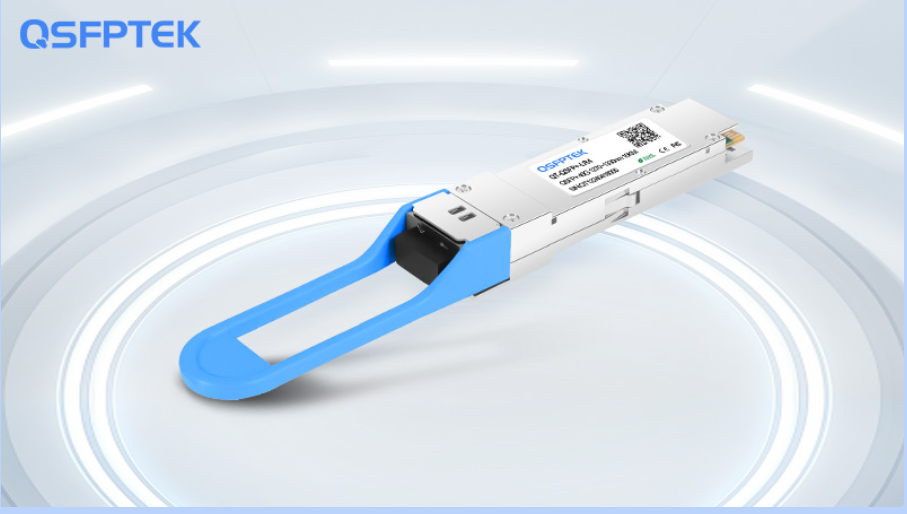Introduction
In modern data centers and enterprise backbones, the demand for higher speed and longer reach keeps rising. While 100G and 400G solutions are now popular in large-scale cloud environments, the 40GBASE-LR4 optical module still plays an important transitional role. It provides a balance between performance and cost, making it a reliable choice for mid- to long-distance 40G Ethernet connections. Whether it’s a traditional enterprise upgrade or a high-capacity data center expansion, 40GBASE-LR4 remains one of the most practical optical transceivers available today.
What Is a 40GBASE-LR4 Optical Module?
The 40GBASE-LR4 module is a QSFP+ (Quad Small Form-factor Pluggable Plus) transceiver designed for long-reach optical communication. It transmits data at 40 Gigabits per second over single-mode fiber (SMF) and supports distances up to 10 kilometers. This makes it ideal for data center interconnects, campus backbone links, and metropolitan area networks (MANs).
Unlike short-reach modules that use parallel optics, the LR4 module uses a CWDM (Coarse Wavelength Division Multiplexing) technique. It combines four optical channels, each running at 10Gbps, into a single fiber. On the receiving end, it separates them back into four channels. This not only reduces the number of fibers needed but also allows high-speed transmission across long distances with minimal signal degradation.
Technical Overview and Performance Features
The 40GBASE-LR4 operates over the wavelength range of 1270 to 1330 nm. Each of the four channels uses a specific CWDM wavelength (1271, 1291, 1311, and 1331 nm). This design ensures stable transmission while keeping power consumption under control—typically around 3.5 watts per module.
One of the main benefits of LR4 modules is their compatibility with existing 10G networks. Through breakout cables (1×QSFP+ to 4×SFP+), users can connect one 40G port to four 10G ports. This is extremely helpful for gradual upgrades, letting network operators move from 10G to 40G without replacing the entire infrastructure.
In terms of optical performance, 40GBASE-LR4 supports a link budget of around 6 to 8 dB, which provides a reliable margin for 10km transmission over standard G.652 single-mode fiber. It also meets IEEE 802.3ba standards, ensuring interoperability among different vendors’ devices.
Applications in Data Centers and Enterprise Networks
The 40GBASE-LR4 module is primarily used in data centers for aggregation and spine-leaf connections, where bandwidth needs are moderate but distance requirements are higher than what SR4 or DAC solutions can handle. For example, it’s common to see LR4 modules used to connect top-of-rack switches to aggregation layers across large server rooms or between separate buildings.
In enterprise networks, 40GBASE-LR4 helps bridge connections between core routers and distribution switches. Many financial institutions and research organizations prefer LR4 because of its low latency and consistent long-distance performance. It also works well in campus network environments, connecting multiple buildings or departments through single-mode fiber runs.
Advantages of 40GBASE-LR4
- Long Reach up to 10km: Ideal for campus or metro-scale connections.
- Reduced Fiber Count: CWDM technology enables high capacity with fewer fibers.
- Seamless Migration Path: 10G to 40G upgrades are simplified using breakout cables.
- Excellent Signal Quality: Low dispersion and low power consumption maintain consistent performance.
- Proven Reliability: Based on mature QSFP+ form factor and standardized components.
Beyond these technical strengths, 40GBASE-LR4 offers a practical balance between cost and performance. While newer 100G or 400G modules offer higher throughput, they often come at significantly higher prices and power demands. For many small to mid-sized data centers, 40GBASE-LR4 hits the sweet spot between capability and affordability.
The Role of 40GBASE-LR4 in Modern Network Evolution
Although the industry is rapidly moving toward 100G and 400G, not every environment requires that level of speed. Many data centers still run 40G connections as their primary fabric, especially for applications that prioritize stability and predictability over raw throughput.
In scenarios where devices, servers, or storage systems can’t yet fully utilize 100G bandwidth, LR4 modules provide more than enough capacity. In fact, they’re often used as bridge technology — supporting smooth migration between older 10G infrastructure and next-generation 100G systems.
Moreover, 40GBASE-LR4 modules remain widely supported by major switch and router vendors, which means organizations can continue using them with confidence for years to come.
Comparison: 40GBASE-LR4 vs. 40GBASE-SR4
While both deliver 40G speeds, their applications differ. The SR4 module uses multimode fiber (MMF) and works up to 100 meters, making it ideal for short intra-rack or cross-row links. LR4, by contrast, is designed for long-distance communication up to 10km over SMF.
Another key distinction is cost versus reach. SR4 modules are cheaper per unit but require MPO/MTP connectors and multiple fibers. LR4, though more expensive per module, can achieve greater distances with only two fibers, reducing cabling complexity in the long run. For networks that prioritize clean architecture and scalability, LR4 remains the better long-term investment.
Conclusion
The 40GBASE-LR4 optical transceiver remains one of the most trusted and balanced solutions in the optical networking world. It bridges the gap between legacy 10G and next-generation 100G infrastructures with high reliability and impressive reach. Its CWDM-based design enables efficient long-haul transmission without overcomplicating fiber infrastructure, while maintaining compatibility with existing network hardware.
In a world chasing faster and denser connectivity, 40GBASE-LR4 stands as a mature, stable, and cost-effective choice for enterprises and data centers alike. It’s not just a relic of the 40G era—it’s a proven foundation for networks that value dependability, smooth scalability, and predictable long-term performance.
For More Update and Stories Visit: Info Records















